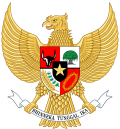Background
On 14 March 1957, the Second Ali Sastroamidjojo Cabinet collapsed as a result of pressure from regional rebellions, splits between the parties comprising it and attacks on the political system, which led to the resignations of members. President Sukarno had expressed his desire for a gotong royong (mutual assistance) cabinet, in which the four major parties, including the Communist Party of Indonesia (PKI) would work together in the national interest. However, following vociferous opposition from the other parties and the Army, Sukarno was forced to back down. On 15 March, he asked Indonesian National Party chairman Suwirjo to form a cabinet, but he failed, with the result that Sukarno himself called a meeting on 14 April of party leaders and military officers, at which they were all asked if they were prepared to join the cabinet. The Masyumi Party, most of whose members refused to serve in the cabinet, accused Sukarno of acting illegally, but to no avail. The party later expelled its two members who joined the cabinet. Sukarno appointed cabinet veteran Djuanda Kartawidjaja to head a cabinet made up of qualified individuals who did not represent any parties. The cabinet was announced on 8 April and appointed by Sukarno the following day at the Merdeka Palace. [2] [3] [4]
This page is based on this
Wikipedia article Text is available under the
CC BY-SA 4.0 license; additional terms may apply.
Images, videos and audio are available under their respective licenses.


